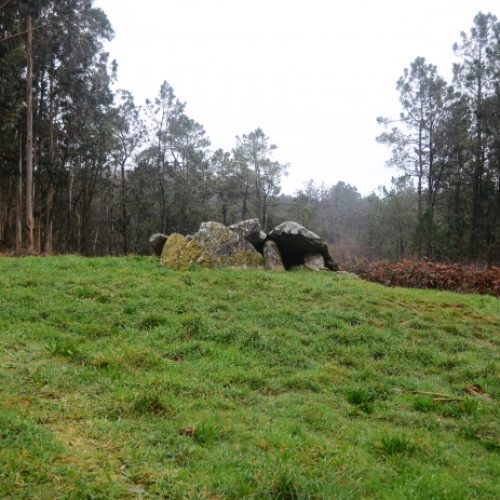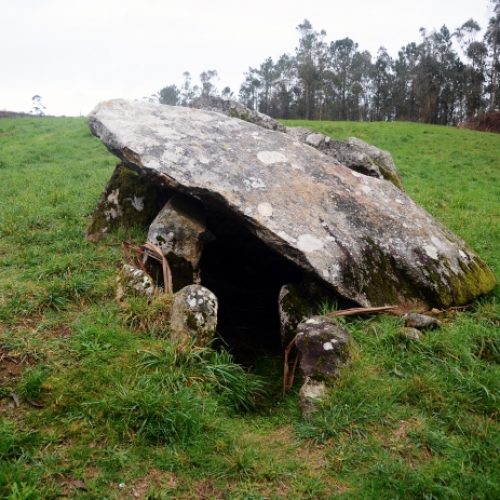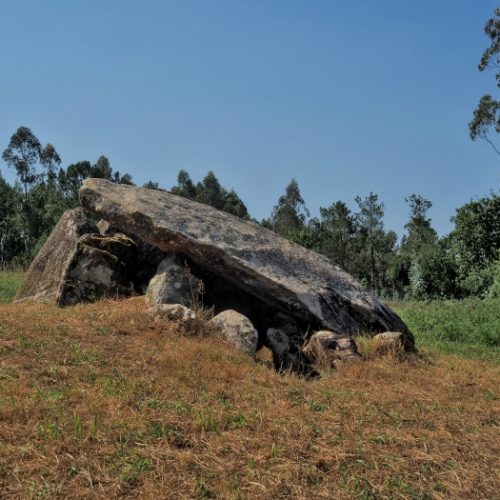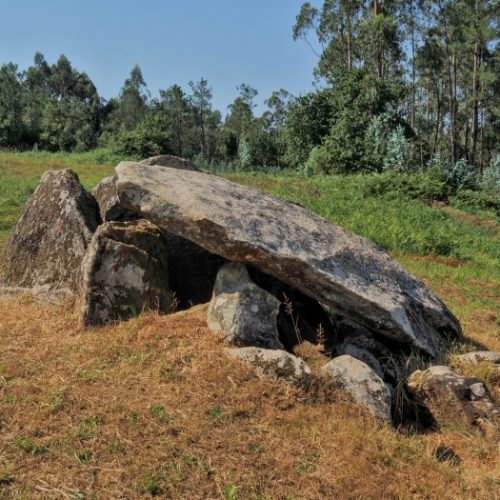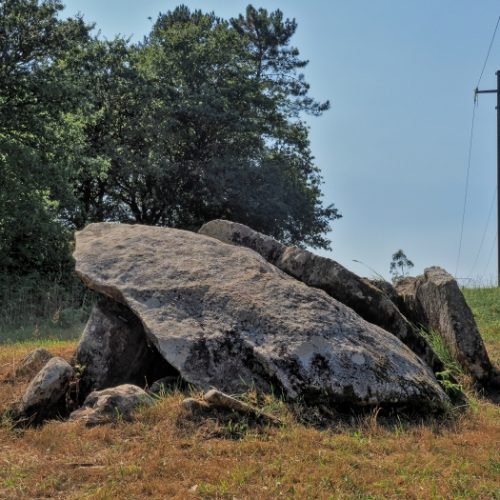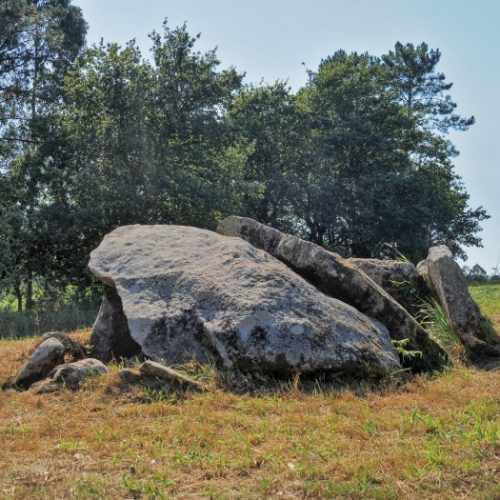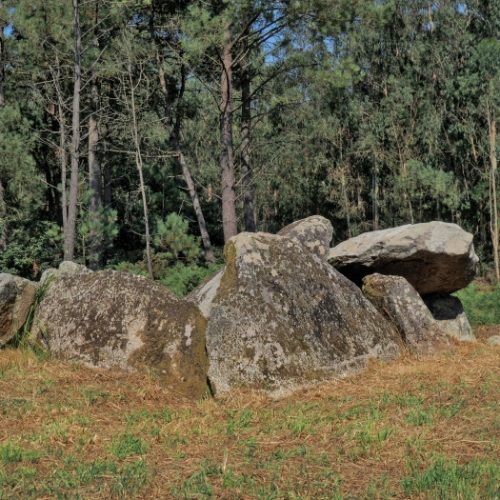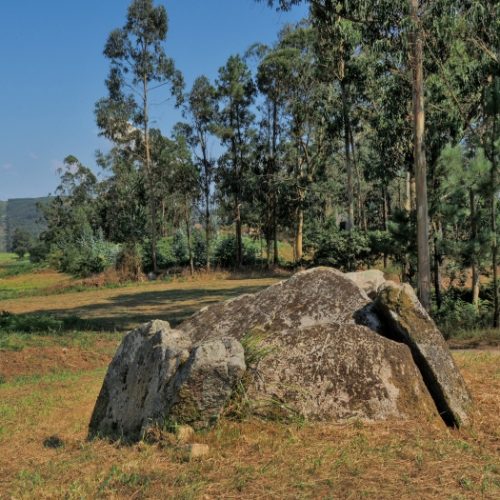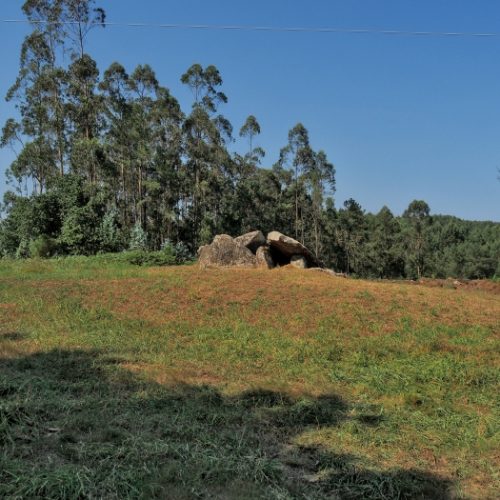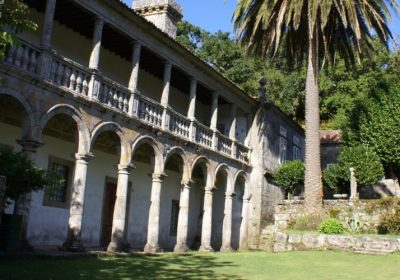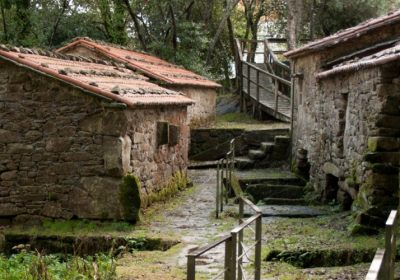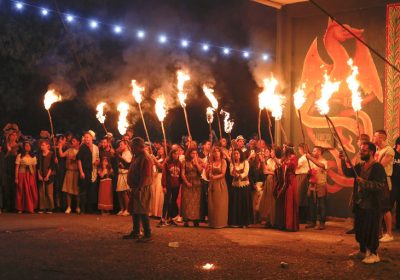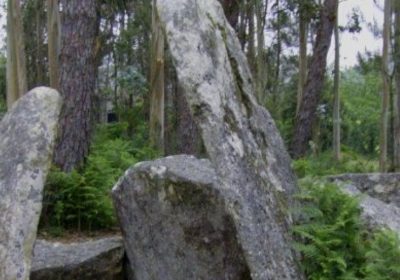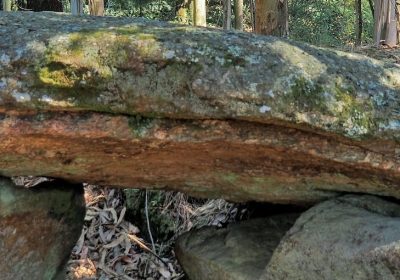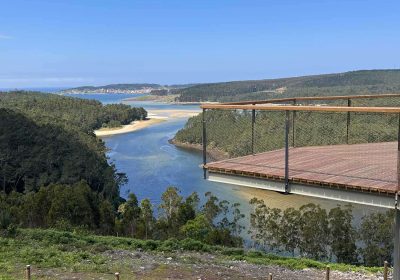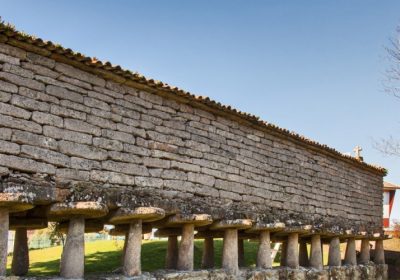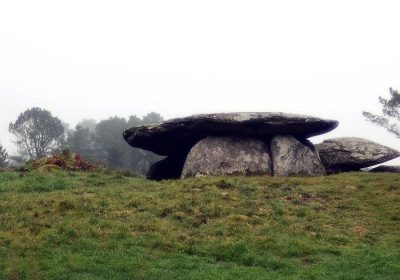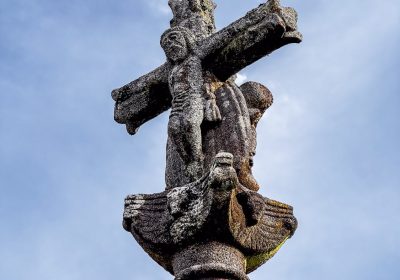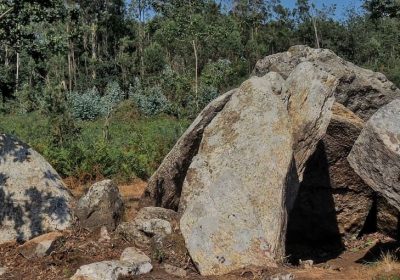A dolmen in the middle of the meadow
Pedra Moura is the evocative name of a megalith that appears small and modest, but which clearly shows the most characteristic elements of the dolmens of A Costa da Morte. A chamber, an east-facing corridor and a mound of earth about fifteen meters in diameter still perfectly visible. Originally, this burial mound must have been even more monumental, since it had a stone breastplate that covered it and was partly altered in 1989.
The monument features traces of red and black prehistoric paint on white plaster on at least five of the chamber and corridor slabs. The pigments are quite poorly preserved, but samples have been taken to identify their composition and the black paint, being of organic origin (charcoal), could be used to carry out carbon-14 dating.
Similar samples of black paint were collected by Professor Fernando Carrera in the late 1990s at Pedra Cuberta, Pedra da Lebre, Dombate and others. The results in general were very homogeneous and for the specific case of Pedra Moura they provided an approximate date between 3960 and 3640 BC. This seems to indicate that a large part of the large corridor dolmens of A Costa da Morte must have been built at the beginning of the fourth millennium BC.
Recently it has also been discovered that the lid of Pedra Moura has a slight anthropomorphic shape, as have Arca da Piosa (Zas), Pedra da Arca (Vimianzo) and Dombate (Cabana de Bergantiños).

